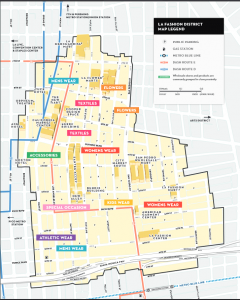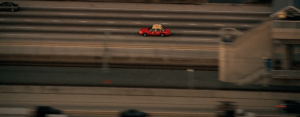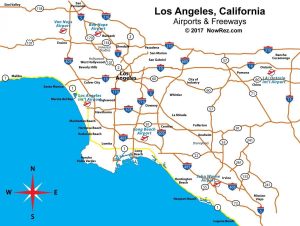Coyotes in L.A: Covert Cartel Actions in Los Angeles, California
Drug trafficking is a borderless industry by nature, but is often depicted as having clearly delineated spheres of influence. In Collateral, Vincent (Tom Cruise) is hired by a drug cartel to kill key figures prosecuting a case against one or more members of their organization – five in one night. The hit is bold: In addition to hitting low-level witnesses and other criminals, the last target on hitman Vincent’s list is the prosecutor for the case, in other words, a U.S. government employee. In the film, Vincent’s actions are presented as an intrusion into the seemingly ordered environment of Los Angeles, with its tall glass towers and sprawling, always-running freeways. In reality, though, drug cartels don’t always hide in the shadows or limit their activities abroad – rather, they take advantage of L.A.’s sprawl to conduct covert actions on U.S. soil they couldn’t do otherwise. Drug trafficking organizations deliberately interact with U.S. urban environments, centered around Los Angeles, to carry out violent and non-violent operations, challenging the common perception that the drug trade spatially limits itself to the places where crime is commonplace or expected, but actually thrives in sophisticated metropoles. As a center for economic capital, Mexican diaspora movements, and receptive markets, Los Angeles shifts the border narrative, as Hugo Benavides calls it, to the polis of American society. “As a border dialogue,” Benavides says, “Mexico’s northern frontier and being narco do not respond exclusively to a Mexican identity but, rather, to a wider transnational dialogue between the neocolonial U.S. empire and the postcolonial existence of Latin America.” [1. Benavides, Hugo, Drugs, Thugs, and Divas: Telenovelas and Narco-Dramas in Latin America, University of Texas Press, 2008. (112)]
Drugs come in, money goes out. Narcos and Maria Full of Grace illustrate how cartels get creative bringing the drugs in, Los Angeles is also a forum for getting the illicitly-sourced money out of the country and back into the hands of cartel leaders. In 2014, a joint operation by the Immigration and Customs Enforcement Agency (ICE) and Homeland Security Investigations (HSI) arrested nine people suspected to be linked to cartel money laundering schemes in downtown Los Angeles, according to a report by local TV station KTLA 5[2. Melissa Pamer, Eric Spillman, Chris Wolfe. (2014) “Millions in Cash Found in L.A. Fashion District Takedown of Alleged Drug-Money Laundering Operations”, KTLA5]. The figure seems disproportionate to the scale of the operation (“approximately 1,000”[3. Unknown Author (2014), “Large-scale law enforcement effort targets downtown Los Angeles businesses linked to money laundering for drug cartels,” U.S ICE] agents participated in the raids), but the operation also resulted in the seizure of $65 million to be investigated for drug connections. The report explains that LA’s Fashion District is a hub for illegal money laundering, where drug money is traded for goods, exchanged into pesos, then traded back to cartel members in Mexico where they can use that currency. This report reveals a number of potentially startling truths about Los Angeles’ role in the drug trade. First, it illustrates that drug cartels have not only infiltrated the city itself but also the corporate bureaucracy that props up the urban economy, a startling trend that is confirmed by investigations by the Department of Justice. This shows a degree of professionalization on the part of the cartels that an average US citizen would not expect: Now even an executive wearing a three-piece suit could be working for a cartel. Now even companies with respectable-sounding names like “Pacific Eurotex” and “Q.T Fashion” could be laundering literal blood money. The business of drug trafficking becomes just that: a business. In Collateral, Vincent’s transgression into the urban space is unsettling and destabilizing, but as this report shows, drug cartels are willing and able to move into the “good parts of town” to get what they want – nowhere in the city is safe from their influence.

The infiltration of cartels into L.A. isn’t new: According to a Justice Department report from 2008, Los Angeles is classified as a High-Intensity Drug Trafficking Area, or HIDTA. The report, which mentions the money laundering activities explicated in the 2014 incident six years before the fact, breaks down the influence and activities of high-profile drug cartels in the city.[4. National Drug Intelligence Center, Drug Market Analysis: Los Angeles High Intensity Drug Trafficking Area § (2008).] Most striking about the report is that it explains why L.A. is a hotbed for drug crime – it isn’t just because of the number of “customers.” For instance, L.A.’s highly developed freeway system [5. National Drug Intelligence Center, Drug Market Analysis: Los Angeles High Intensity Drug Trafficking Area § (2008). 15] facilitates far-reaching drug transport operations that allow cartels to geographically expand their influence beyond the inner city and into the suburbs. Collateral is plugged into this urban reality, using Max’s knowledge as a cab driver and combining it with shots of the freeways to illustrate the urban sprawl.

Furthermore, L.A.’s climate is especially suited to large-scale marijuana growth operations, which was becoming more in demand in the mid-2000s. The report also notes trends in escalating violence in the city: Cartel turf wars led to a concentration of highly-skilled agents equipped with and trained in the use of “military equipment and weapons”.[6. National Drug Intelligence Center, Drug Market Analysis: Los Angeles High Intensity Drug Trafficking Area § (2008). 18] which can outgun law enforcement – this is certainly seen in Collateral in the case of Vincent and the other hitmen who are seen equipped with assault rifles and laser-equipped handguns (1:15:28). This interpretation of Los Angeles extends into the cultural milieu as well: Mike Davis and Robert Morrow’s City of Quartz explains how Los Angles became the city of noir, riddled with “pessimism” that emerged out of the anxieties of post-war intellectuals with regard to urban capital and wealth concentration in the “sunshine” city[1. Morrow, Robert and Davis, Mike (1990) City of Quartz: Excavating the Future in Los Angeles. Verso Publishing 16]. Morrow and Davis’ throughline can be traced to the emergence of the neo-noir genre that interprets these urban anxieties through economic decline and rising violence attributed to cartels and other criminal elements. Indeed, in his 2018 paper Terrorist Tactics by Criminal Organizations, author Brian J. Phillips traces this professionalization and escalation of cartel violence to the recruitment of ex-military operatives – like Vincent, as speculated by characters of the film once they analyze his techniques (1:13:15), and acquisition of sophisticated military equipment: “Beyond hand grenades, in 2015 cartel members used a rocket-propelled grenade to shoot down a Mexican Army helicopter.”[3. Phillips, Brian J. (2018) “Terrorist Tactics by Criminal Organizations: The Mexican Case in Context.” Perspectives on Terrorism 12, no. 1: 46–63.] While Phillips’ analysis focuses on cartel actions south of the border, this example illustrated the enhanced military capacity of cartels and subsequent overall escalation of violence the Justice Department whitepaper observed and the general increase in sophistication in cartel actions in Los Angeles. Phillips also notes the usage of assassination tactics by cartels as an outgrowth of Russian and Italian organized crime activity in the late 20th century. This is especially relevant to Collateral due to its subject matter but can also be contrasted due to the film’s more refined forms of violence: Vincent uses only a standard handgun and deals with targets quietly and efficiently, rather than relying on assault tactics or weapons.

Overall, Mexican-based drug cartels are far more intimate with American urban environments than one might expect given the stark contrast between these environments presented in some of the narco-dramas of the past twenty years, which often show cartel activities in places like Los Angeles as intrusions into an otherwise “safe” space. Rather, L.A. is distinctly “unsafe” by design: Its sprawl and climate can hide growing operations, its roadways can facilitate rapid expansion, and its corporate infrastructure can launder dirty money. Violence is also enmeshed in the urban environment as cartels grow bolder and more powerful – from starving coyotes to fearsome wolves.